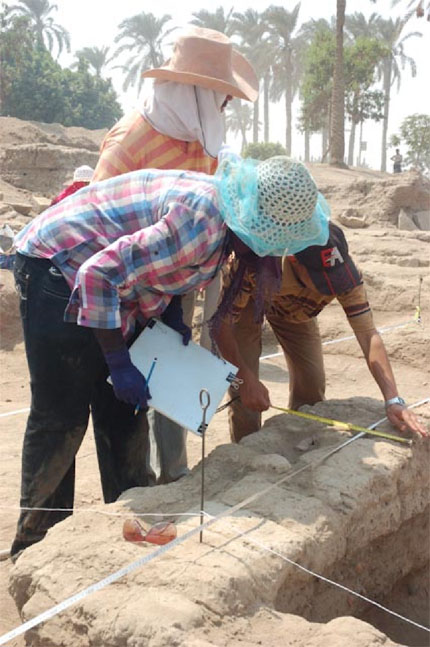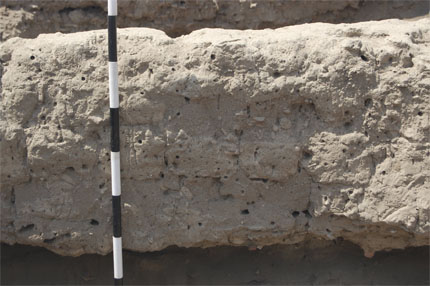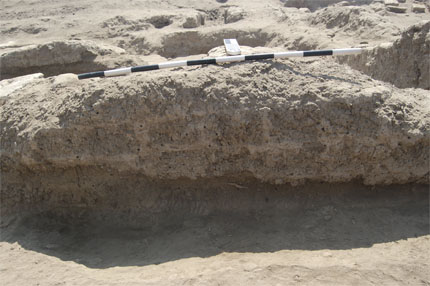Posted by Ashraf Abdel Aziz, MRFS supervisor, SCA
When I started to study sundried bricks in 2005, I had no clear plan because so many studies had already been done. I said to myself, “What can I add to the abundant brick studies which cover bricks as an architectural item?”. These studies also cover the geochemical and sedimentological composition of the bricks. But Ana Tavares pushed me to create a brick typology after she noticed that I was interested in the brick measurements.

Discussing and drawing mudbricks. Photo by Mark Lehner
The Giza excavators kept asking “Is this a Nile clay or a silty brick? And this one, is it a silty-sand brick?”. Through years of work on the brick topic, I made the “Giza Sundried-Brick Field Typology” which focused on the brick as a culture artifact. The philosophy of this study is that all data collection and analysis could be completed in the field with very little technology. In the field and not in the lab, without microscope or special permission; Simply by hand and by eye with a pick and a tape measure.
I also did some ethno-archaeology*. In this study, I went to one of the old men at my town Ayate whose father owned a brick factory in the 1950s. He recently gave me a lot of information about the development of making bricks and even information about brick making in the time of the annual flood. I visited the factories at my town to catch the sequence of making bricks.

Mudbrick-A was the main brick type which was used to construct the Memphis brick architecture; in contrast it is very unique in Giza. Photo Ashraf Abdel Aziz.
Although I did not study the grain size and the magnetic properties of the brick soil, I have a brick typology which contains 6 main types. This classification is based on the brick material, composition, visible inclusion and measurements. It is a field tool. It is easy to make it wherever I work; so we have it for Giza, also for Luxor from the material of the two salvage field schools at the garden Khaled Ibn el-Waleed in 2008 and at the Luxor Town Mound in 2010. And now at Memphis where we are running our field school this year.

Nile Clay Brick-A was also used at Kom Fakhry (less than 10%). In contrast, it was the main brick type used to construct the Khentkawes Town and the Menkaure Valley Temple in Giza. Photo Ashraf Abdel Aziz.
Briefly, the main information about the bricks at Kom Fakhry is that both of the tombs in the western part of the site and the settlement in its eastern part were constructed from two brick types; Mudbrick-A and Nile Clay Brick-A (according to the Giza brick field typology) which are composed of Nile alluvium.

A new brick type: sundried mud brick C1. Photo by Mark Lehner.
Two brick sizes that were used to construct both of the cemetery and the settlement at Kom Fakhry were the same in size, composition, inclusion and Munsell color chart as those in the Giza typology.
So now my colleagues are amused when we visit any archaeological site and I immediately say, “Those are Nile clay brick A” or “Of course medium size, mudbrick B”.
